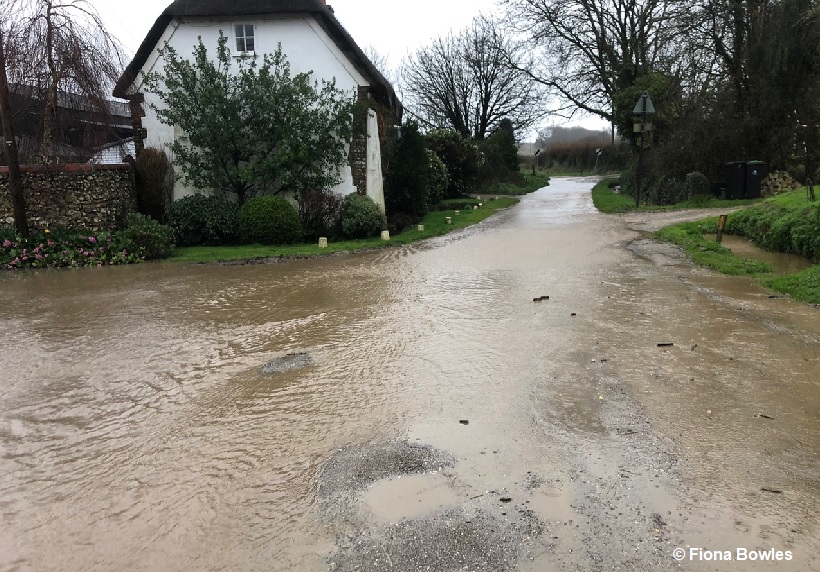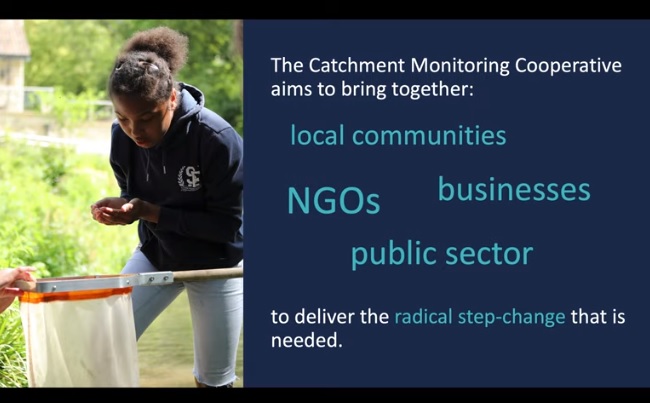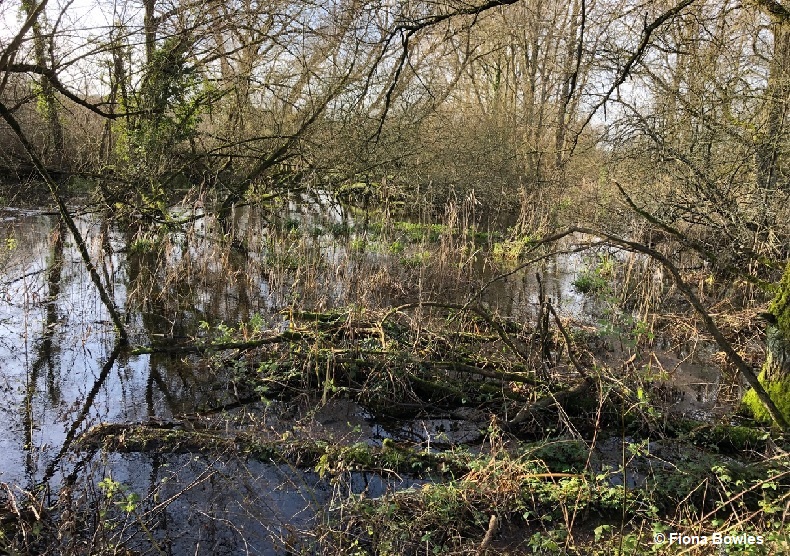Fiona Bowles – Chair Dorset Catchment Partnerships
Spending more time in the Dorset Frome valley on foot, bike and horseback during lockdown, I can attest to the value of ‘blue space’ for my personal well-being. I have also knuckled down to some webinars and reading on watery matters. This has led to moments of high optimism over the Government’s promise of new ways of funding land management and good intentions on ensuring Nature Recovery as well as valuing the outcomes of these healthier environments through Natural Capital accounting. Water is key to all of this and the Catchment Partnerships can contribute to the LNP’s work on Dorset’s river and marine habitats.

This wet winter increased storm overflows, increasing public pressure to reduce these overflow valves on the sewers, but it also reduced raw water quality for drinking water from wider diffuse pollution too. The rivers left their channels, creating wet woodland on the River Piddle and a nuisance by running on the highway in Winfrith. Followed by a warm dry spring, this has been a perfect storm for water supply teams, with demand going up by 20% (Water UK). New resources will be needed after all for the next Water Resource Management Plan, to cope with these deteriorating supplies.
This is all timely because, after 5 years, the partnerships are revising the Catchment Plans for both Poole Harbour and the Stour, and it seems that the original issues have not gone away. Our rivers continue to convey an excess of nutrients and fine sediments from land to the harbours, turning Poole Harbour green with algae and even contributing to eutrophication in the Solent. Although some physical barriers have been removed or bypassed, the restored sections of river are a small proportion of the whole and modification of hydro-morphlogy (channel shape and flows) continues to narrowly lead the reasons for rivers failing to meet ‘good’ condition in 41% of the UK rivers. Depressing thoughts, but what has changed since 2014 is that we have a much better understanding of how these problems are caused and how we can jointly resolve them. Reasons to be cheerful include the new farmer-led scheme to reduce their nitrate losses to Poole Harbour and the growth of natural flood management pilots to ‘slow the flow’. These measures are put in to reduce unwanted flooding but also help constrain that sediment and nutrient movement downstream. There has been a significant move from single outcome projects delivered by one organisation, like installing fish passes around barriers in the Frome, to multi-benefit projects run co-operatively by many partners such as with farmers in the Devils Brook.
A key question is how to prioritise all of the action needed and to measure success. As we move to an ‘outcome’ based evaluation, we need to know just how much the habitats have improved, not just how many volunteers were involved. More trout? better water quality? So far habitats, including rivers and streams, are being measured by Km or Ha, but we also need to measure the quality of each habitat to understand just how much biodiversity they can offer, and what services they can produce such as clean water, carbon storage, or clean air. My reading turned up suggestions for measures of ’condition’ or ‘naturalness’ for rivers, but we don’t have much agreement on this yet.

The lack of data is evidenced by the recent release of a new citizen science portal to allow water people to add local freshwater data, and a consultation for establishing a England-wide co-operative for catchment monitoring, based on a USA community project. There is the extensive river data set that the Environment Agency gather to monitor progress to ‘good’ condition, but that is at a scale which does not easily transfer to evaluating local projects and natural capital services, except perhaps clean water.
And just what does ‘natural’ look like for river systems? The River Evolution Model was developed by geomorphologists and shows how river channels change in time, under the influence of their geology, water flow and biology. The original 5 stage model has now evolved to a 9 stage model that now starts at ’Stage zero’; in flatter river valley stretches, the water would have seeped through wetlands with a few, frequently changing small channels, blocked by vegetation and managed by beavers. I remember visiting a small wooded chalk headwater in Sussex with Nigel Holmes, back in the 1990s. It looked just like that, minus the beavers of course. A recently published report on the Heritage of the Dorset Stour looked at how rivers inform archaeology, but also describes how that historical use forms the current river.
So far, most of the river restoration based on this new concept has been done in the NW states of America, but it shifts our ambitions for restoring natural processes to river valleys significantly. Luckily the Environment Agency was also inspired to see whether applying this ‘bigger’ approach could provide natural flood management benefits for the Wessex region and have supported a project, with the Wildlife Trust, to see whether it is feasible to apply this approach here. If so, they will develop methods for identifying physically suitable stretches of river valley to test the issues and solutions with some case studies. So we should see shortly just how feasible this approach of releasing more of the floodplains to our river systems is, both practically and economically and see whether there are any takers.

This new thinking does show just how far from ’natural’ most of our aspirations for rivers have been and I can see serious differences of opinion on whether a more naturally resilient river, moving through a mosaic of valley floor wetlands, will trump the cultural value of an iconic chalk stream stretch, in its heavily managed state. Small scale trials will no doubt help the debate, as the new grant schemes for land management influence the economics, and perhaps the size of the resulting fish may tip the balance.
As lock-down unlocks I hope that we all remember the peaceful times in the countryside and I look forward to even more interesting times ahead for our river catchment debates.
